| [1] Schuppan D, Afdhal NH. Liver cirrhosis. Lancet. 2008;371 (9615): 838-851..
[2] 严律南.活体肝移植的现状与展望[J].中国普外基础与临床杂志, 2007,14(2):128-131.
[3] 余希,施明,刘振文,等.肝移植免疫排斥与免疫耐受机制研究进展[J].细胞与分子免疫学杂志, 2012, 28(7): 761-763.
[4] 朱继业,王东.肝移植术后急性排斥反应[J].中华肝脏病杂志, 2005, 13(3): 223-224.
[5] Hughes RD, Mitry RR, Dhawan A. Current status of hepatocyte transplantation. Transplantation. 2012;93(4):342-347.
[6] Ito M, Nagata H, Miyakawa S,et al. Review of hepatocyte transplantation.J Hepatobiliary Pancreat Surg. 2009;16(2): 97-100.
[7] Puppi J, Dhawan A. Human hepatocyte transplantation overview. Methods Mol Biol. 2009;481:1-16.
[8] 赵中辛,丁友成.异种肝细胞移植排斥机理的探讨[J].中华器官移植杂志,2001,22(5): 280-281.
[9] 林丛,侯宽永,张文秀,等.深低温在肝细胞移植中减轻免疫排斥反应的作用[J].北京医科大学学报, 1998,30(1): 32-34.
[10] Evans MJ, Kaufman MH. Establishment in culture of pluripotential cells from mouse embryos. Nature. 1981;292 (5819):154-156.
[11] Yamada T, Yoshikawa M, Kanda S,et al. In vitro differentiation of embryonic stem cells into hepatocyte-like cells identified by cellular uptake of indocyanine green. Stem Cells. 2002;20(2): 146-154.
[12] Oikawa T, Kamiya A, Kakinuma S,et al. Sall4 regulates cell fate decision in fetal hepatic stem/progenitor cells. Gastroenterology. 2009;136(3):1000-1011.
[13] Tsuchiya A, Heike T, Baba S,et al. Long-term culture of postnatal mouse hepatic stem/progenitor cells and their relative developmental hierarchy. Stem Cells. 2007; 25(4): 895-902.
[14] Chinzei R, Tanaka Y, Shimizu-Saito K,et al. Embryoid-body cells derived from a mouse embryonic stem cell line show differentiation into functional hepatocytes. Hepatology. 2002; 36(1):22-29.
[15] Yin Y, Lim YK, Salto-Tellez M,et al. AFP(+), ESC-derived cells engraft and differentiate into hepatocytes in vivo.Stem Cells. 2002;20(4):338-346.
[16] Sandhu JS, Petkov PM, Dabeva MD,et al. Stem cell properties and repopulation of the rat liver by fetal liver epithelial progenitor cells. Am J Pathol. 2001;159(4): 1323-1334.
[17] Ochsner SA, Strick-Marchand H, Qiu Q,et al.Transcriptional profiling of bipotential embryonic liver cells to identify liver progenitor cell surface markers.Stem Cells. 2007;25(10): 2476-2487.
[18] Tanimizu N, Nishikawa M, Saito H,et al. Isolation of hepatoblasts based on the expression of Dlk/Pref-1.J Cell Sci. 2003;116(Pt 9):1775-1786.
[19] Kakinuma S, Ohta H, Kamiya A,et al. Analyses of cell surface molecules on hepatic stem/progenitor cells in mouse fetal liver.J Hepatol. 2009;51(1):127-138.
[20] 陆再英,钟南山.内科学[M].7版.北京:人民卫生出版社,2008: 445-455.
[21] Suzuki A, Nakauchi H, Taniguchi H. In vitro production of functionally mature hepatocytes from prospectively isolated hepatic stem cells. Cell Transplant. 2003;12(5):469-473.
[22] Bae SH. Clinical application of stem cells in liver diseases.Korean J Hepatol. 2008;14(3):309-317.
[23] Zhang B, Inagaki M, Jiang B,et al. Effects of bone marrow and hepatocyte transplantation on liver injury.J Surg Res. 2009; 157(1): 71-80.
[24] Bin WT, Ma LM, Xu Q,et al. Embryonic hepatocyte transplantation for hepatic cirrhosis: efficacy and mechanism of action.World J Gastroenterol. 2012;18(4):309-322.
[25] 申定珠,陶庆,胡义扬,等.四氯化碳肝纤维化大鼠肝组织差异蛋白质组的动态变化[J]. 中华肝脏病杂志, 2012, 20(9): 664-670.
[26] 张磊,李俊,朱鹏里,等.四氯化碳诱导大鼠肝纤维化进展期和恢复期模型的建立[J].中国药理学通报, 2011, 27(12): 1757-1760.
[27] 叶霖财,肖智勇,周文霞,等.四氯化碳致肝纤维化动物模型实验条件的优化[J].军事医学科学院院刊, 2010, 34(4):340-344.
[28] Nowak G, Ericzon BG, Nava S,et al. Identification of expandable human hepatic progenitors which differentiate into mature hepatic cells in vivo.Gut. 2005;54(7):972-979.
[29] Machimoto T, Yasuchika K, Komori J,et al. Improvement of the survival rate by fetal liver cell transplantation in a mice lethal liver failure model.Transplantation. 2007;84(10): 1233-1239.
[30] Paku S, Nagy P, Kopper L,et al. 2-acetylaminofluorene dose-dependent differentiation of rat oval cells into hepatocytes: confocal and electron microscopic studies. Hepatology. 2004;39(5):1353-1361.
[31] 吴昌雄,郑进方,梁力建.胚胎肝干细胞癌变实验[J].中国组织工程研究与临床康复, 2009,13(36):7119-7125.
[32] Zimmerer JM, Pham TA, Sanders VM,et al. CD8+ T cells negatively regulate IL-4-dependent, IgG1-dominant posttransplant alloantibody production.J Immunol. 2010; 185(12):7285-7292.
[33] Donckier V, Craciun L, Lucidi V,et al. Acute liver transplant rejection upon immunosuppression withdrawal in a tolerance induction trial: potential role of IFN-gamma-secreting CD8+ T cells.Transplantation. 2009;87(9 Suppl):S91-95.
[34] Tellides G, Pober JS. Interferon-gamma axis in graft arteriosclerosis. Circ Res. 2007;100(5):622-632.
[35] Jiang X, Kojo S, Harada M,et al. Mechanism of NKT cell-mediated transplant tolerance.Am J Transplant. 2007; 7(6):1482-1490.
[36] Rao MS, Khan AA, Parveen N,et al.Characterization of hepatic progenitors from human fetal liver during second trimester.World J Gastroenterol. 2008;14(37):5730-5737.
[37] Kubota H, Reid LM. Clonogenic hepatoblasts, common precursors for hepatocytic and biliary lineages, are lacking classical major histocompatibility complex class I antigen. Proc Natl Acad Sci U S A. 2000;97(22):12132-12137.
[38] Enns GM, Millan MT.Cell-based therapies for metabolic liver disease. Mol Genet Metab. 2008;95(1-2):3-10.
[39] Muraca M, Gerunda G, Neri D,et al. Hepatocyte transplantation as a treatment for glycogen storage disease type 1a.Lancet. 2002;359(9303):317-318.
[40] Cai J, Zhao Y, Liu Y,et al.Directed differentiation of human embryonic stem cells into functional hepatic cells.Hepatology. 2007;45(5):1229-1239.
[41] Duan Y, Catana A, Meng Y,et al. Differentiation and enrichment of hepatocyte-like cells from human embryonic stem cells in vitro and in vivo.Stem Cells. 2007;25(12):3058- 3068. |
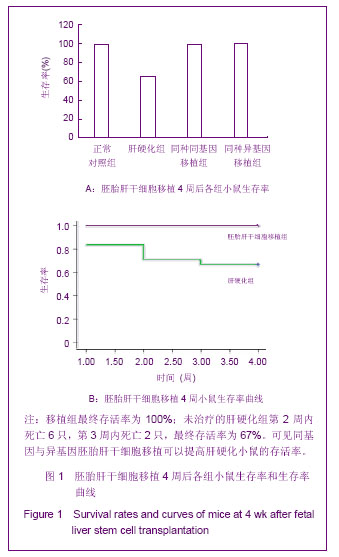
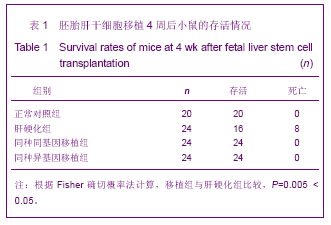
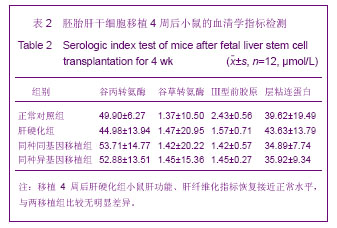
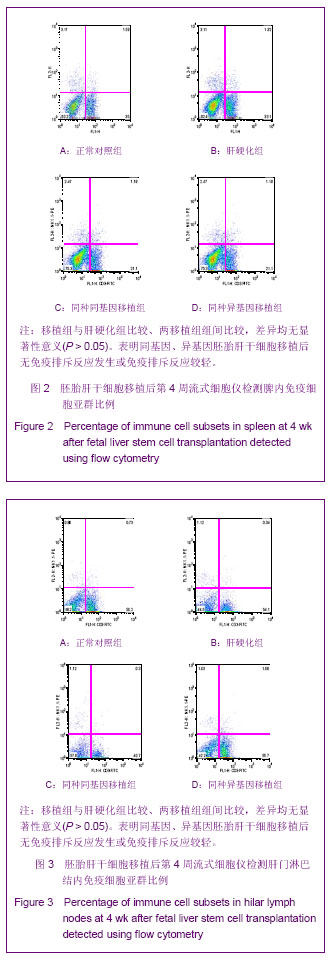
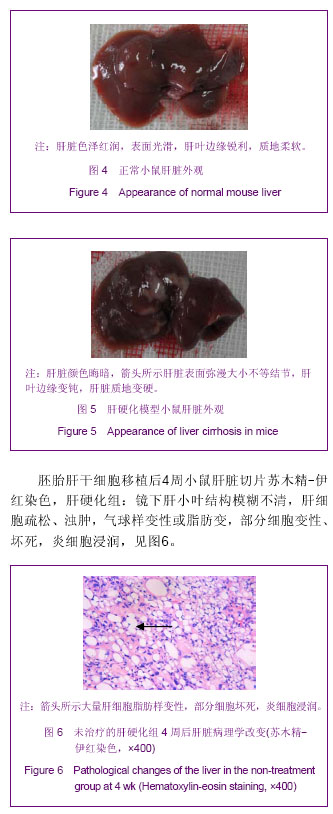
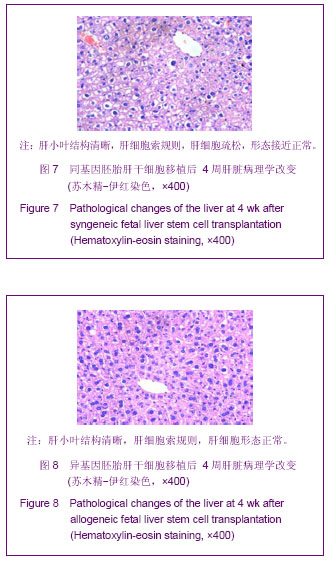
.jpg)